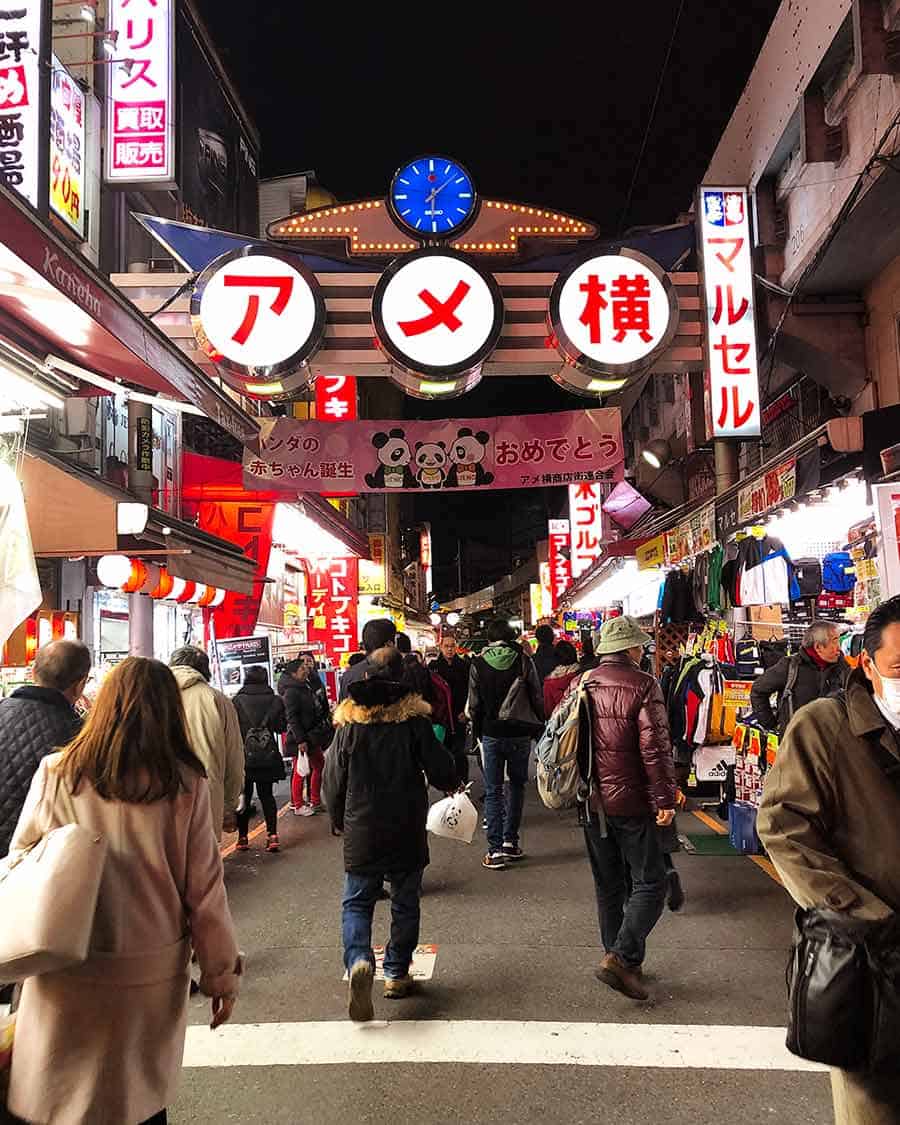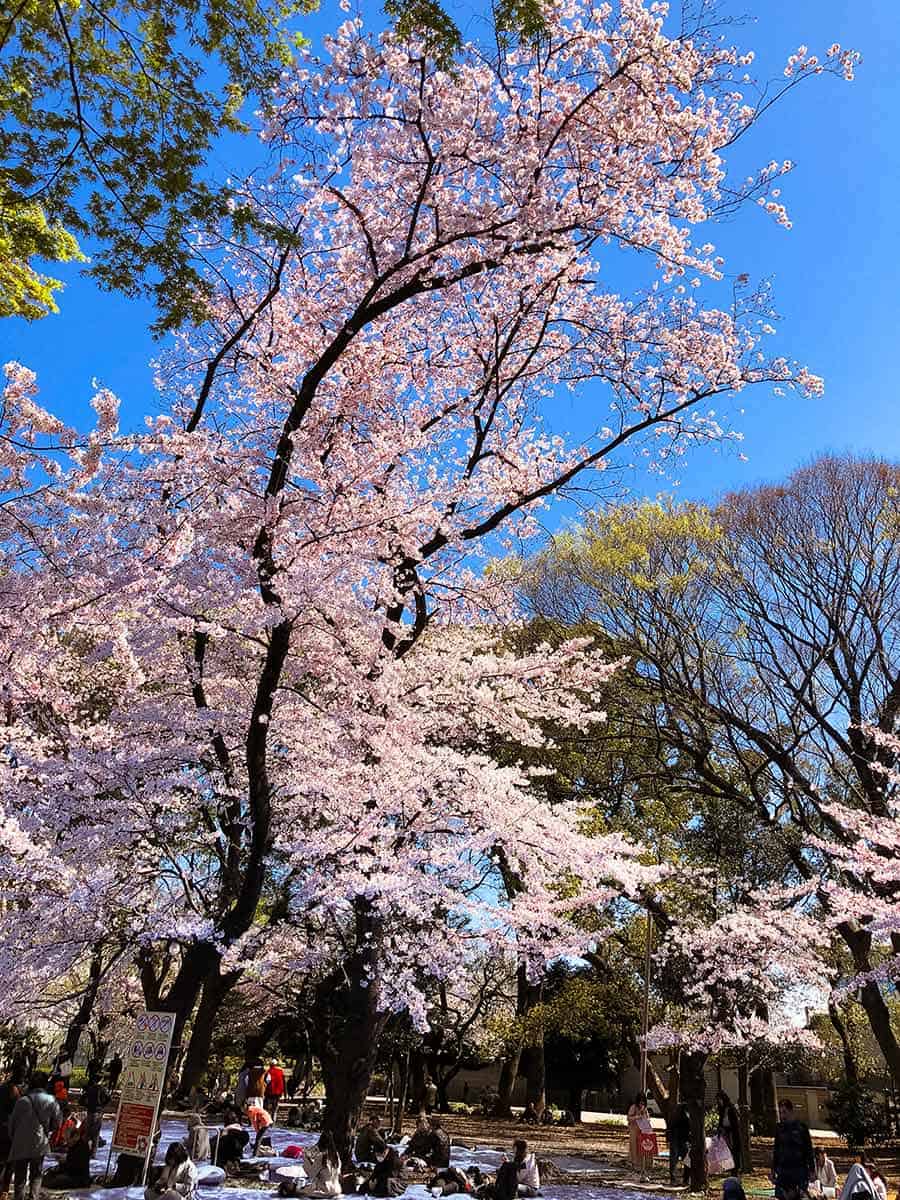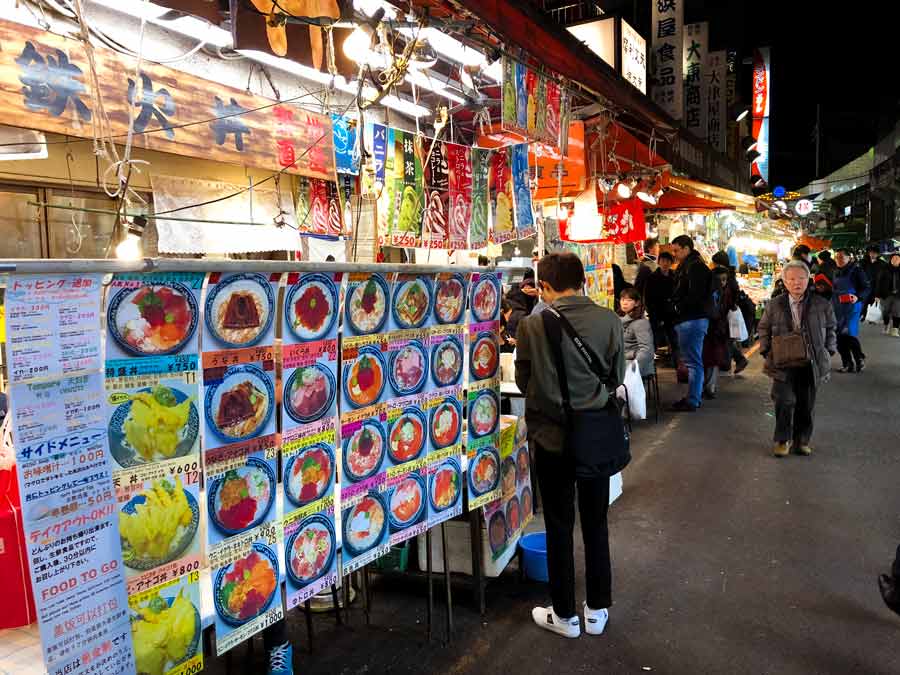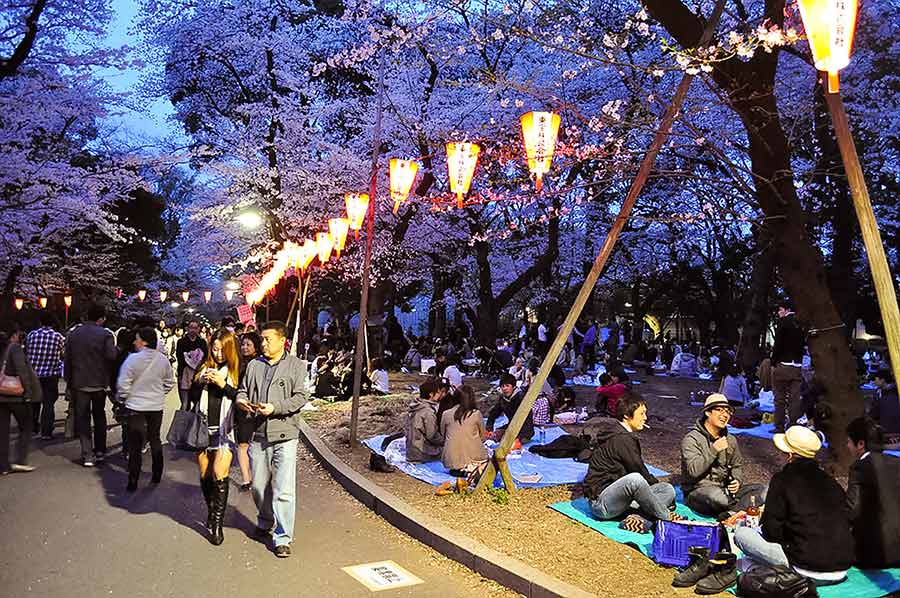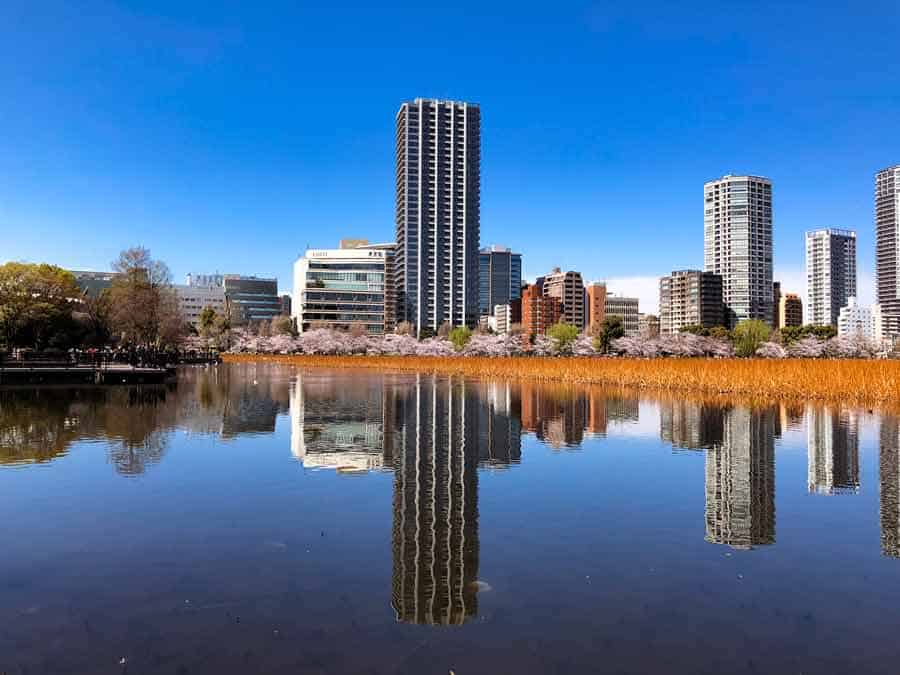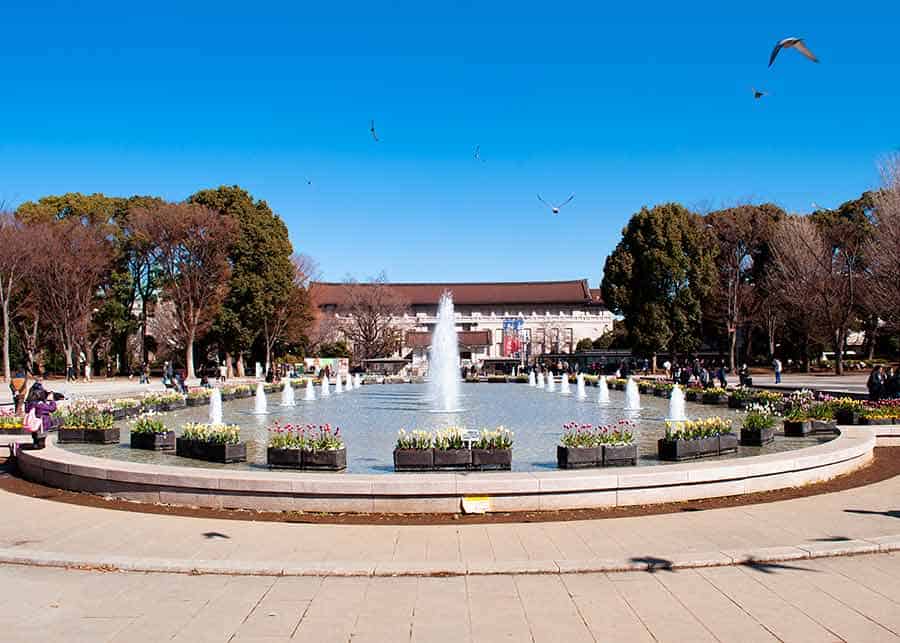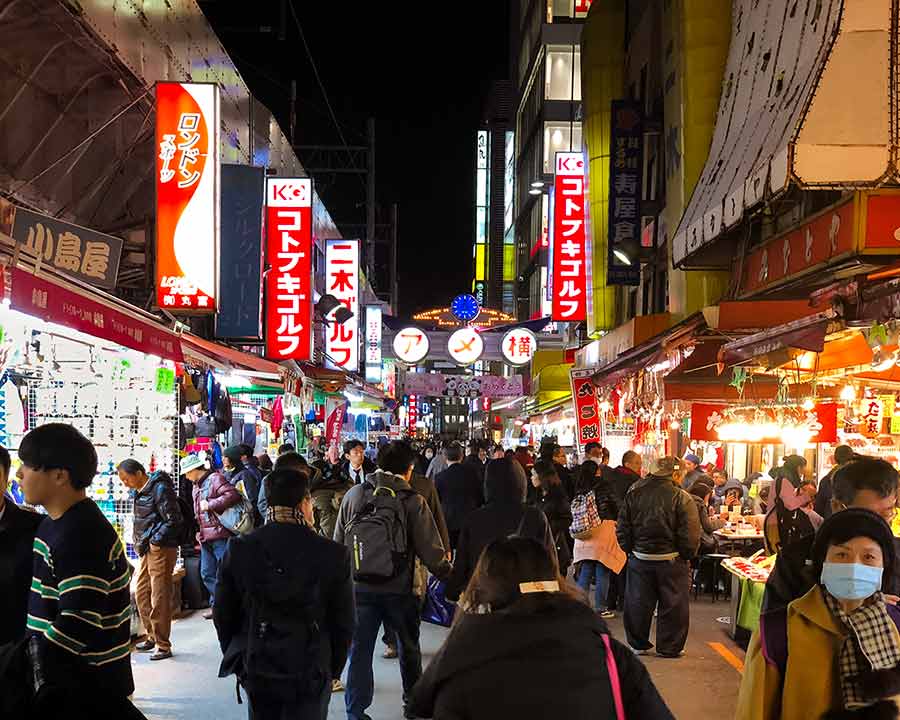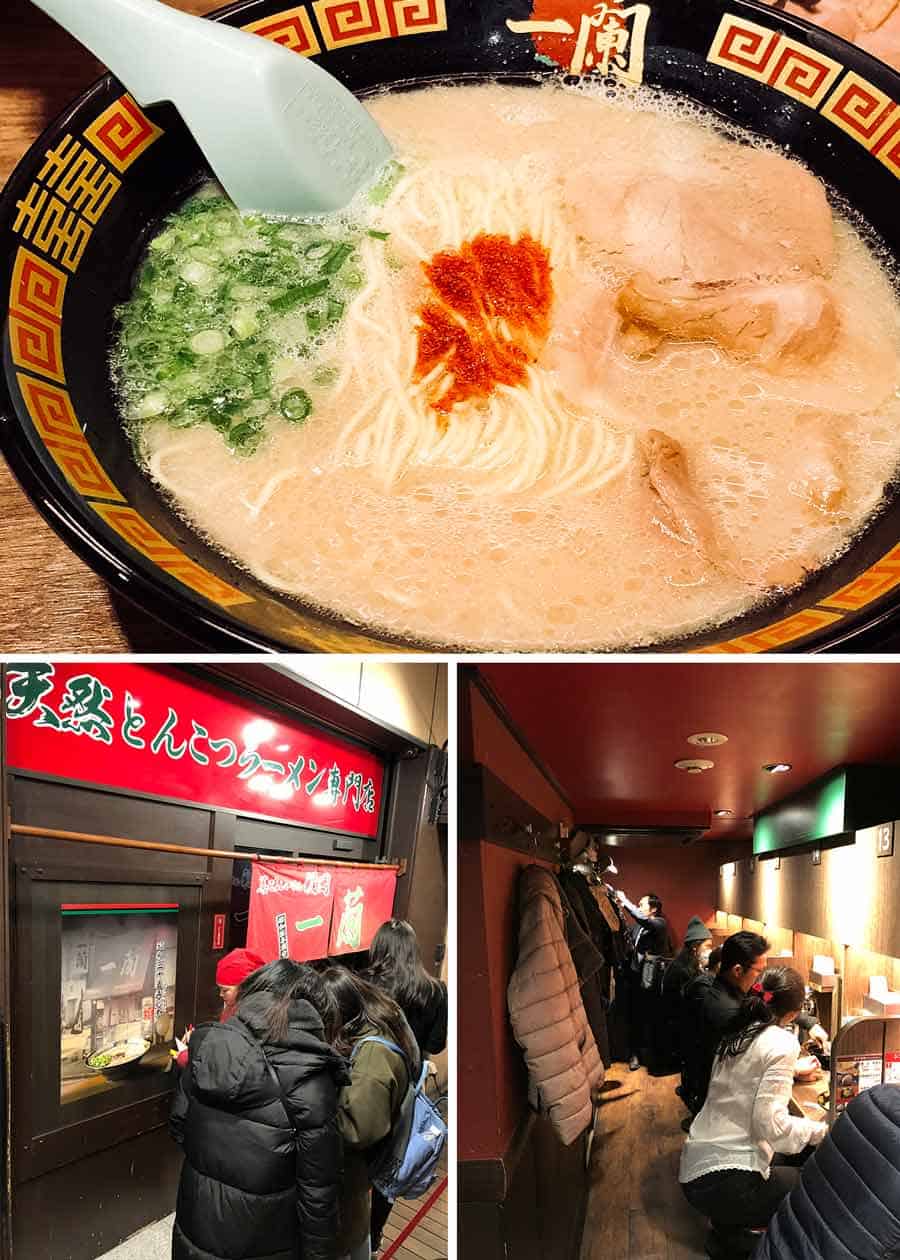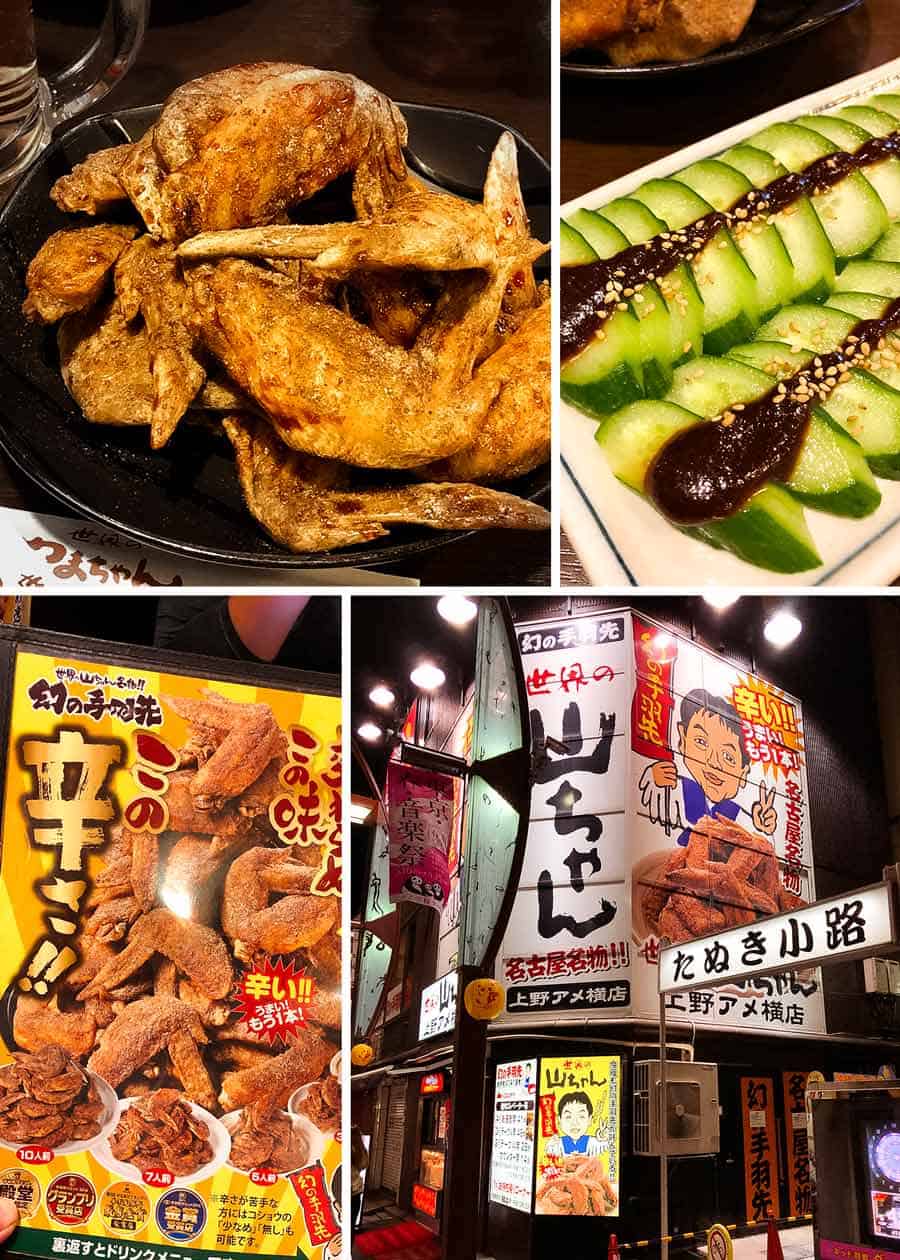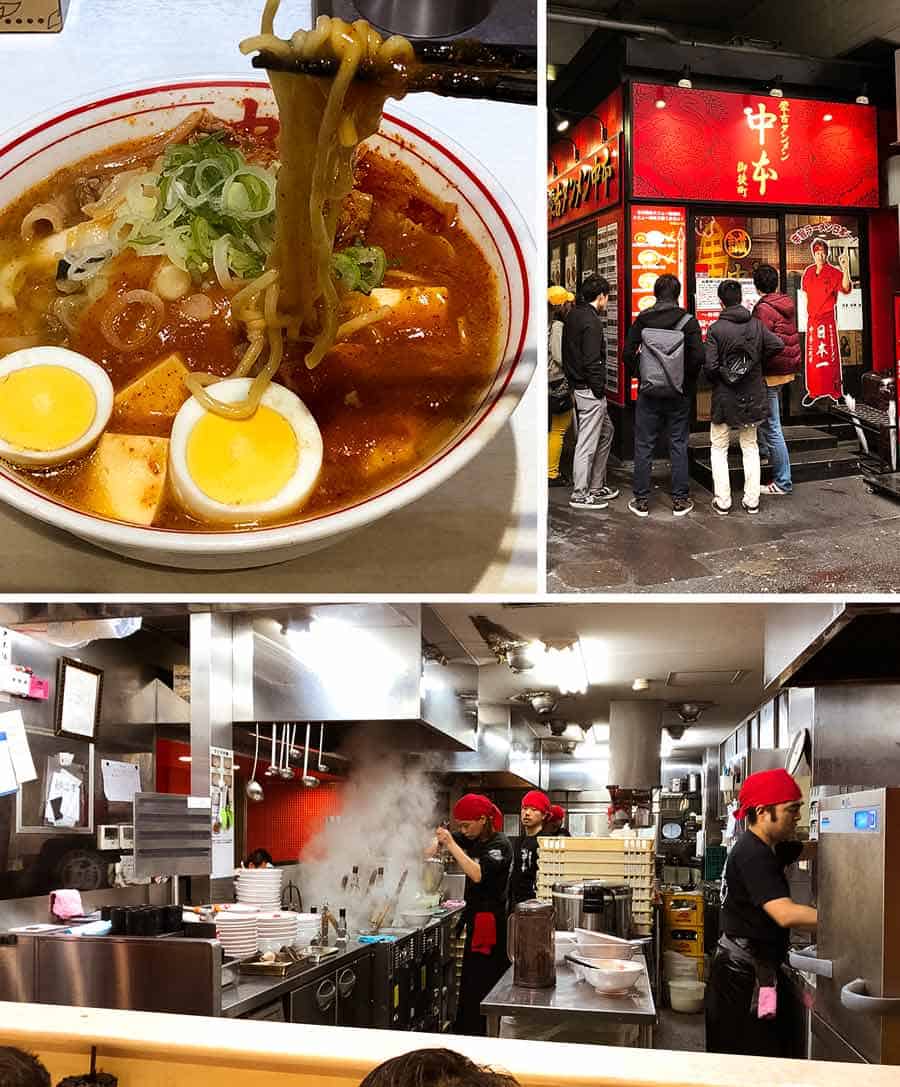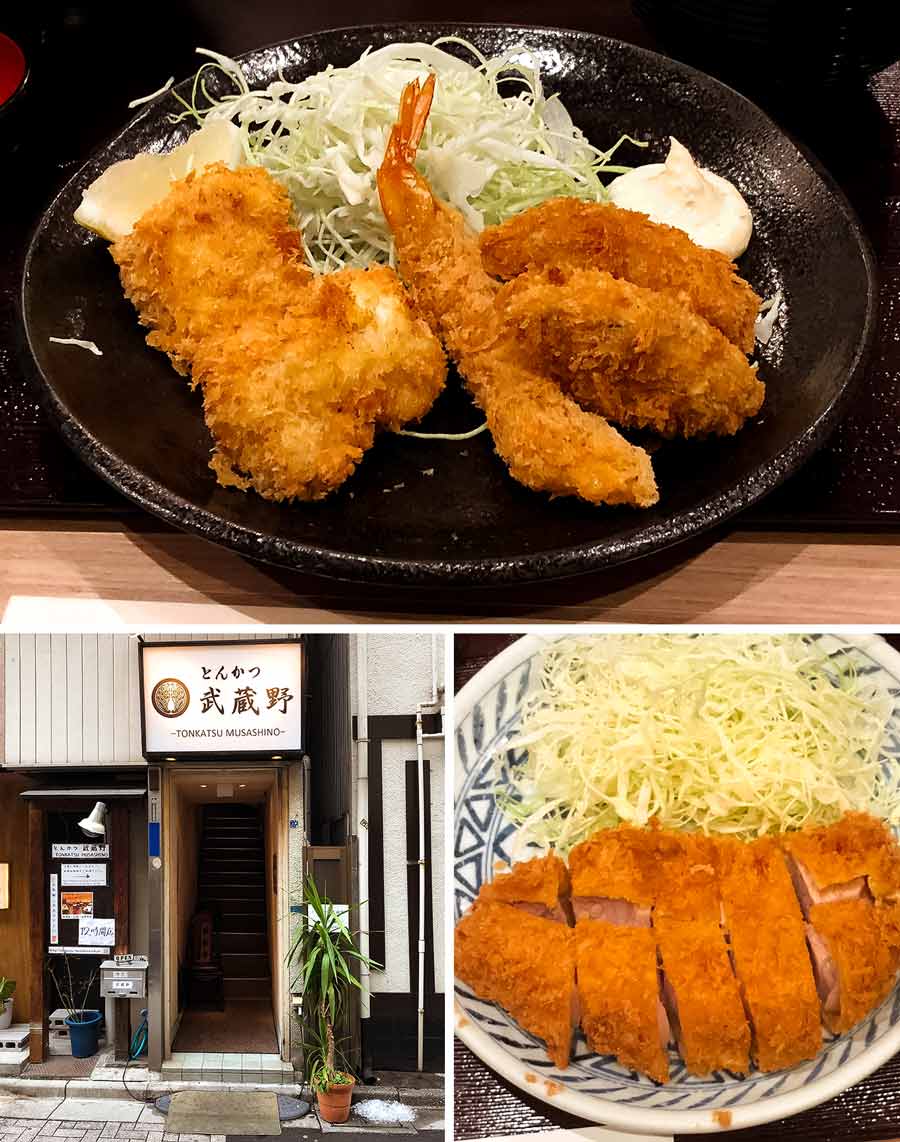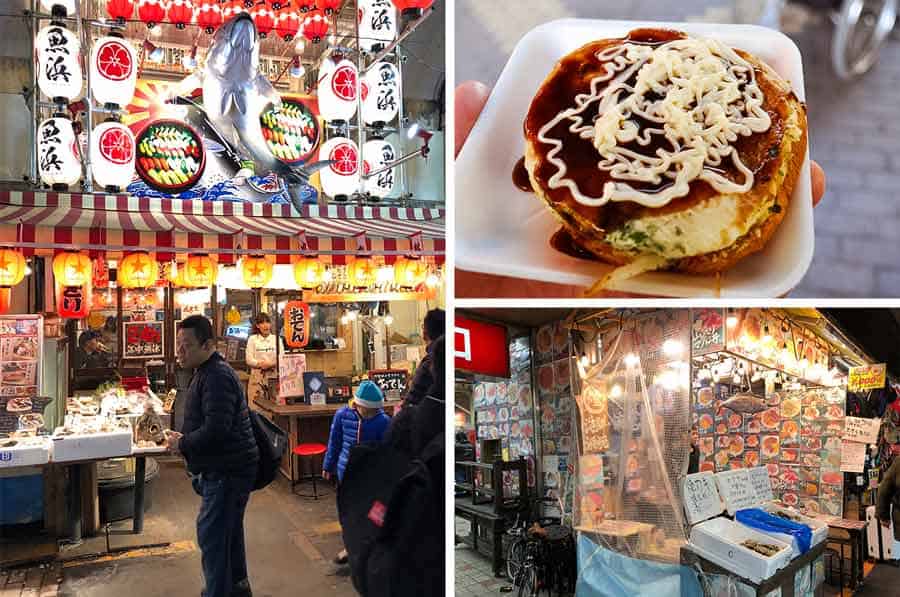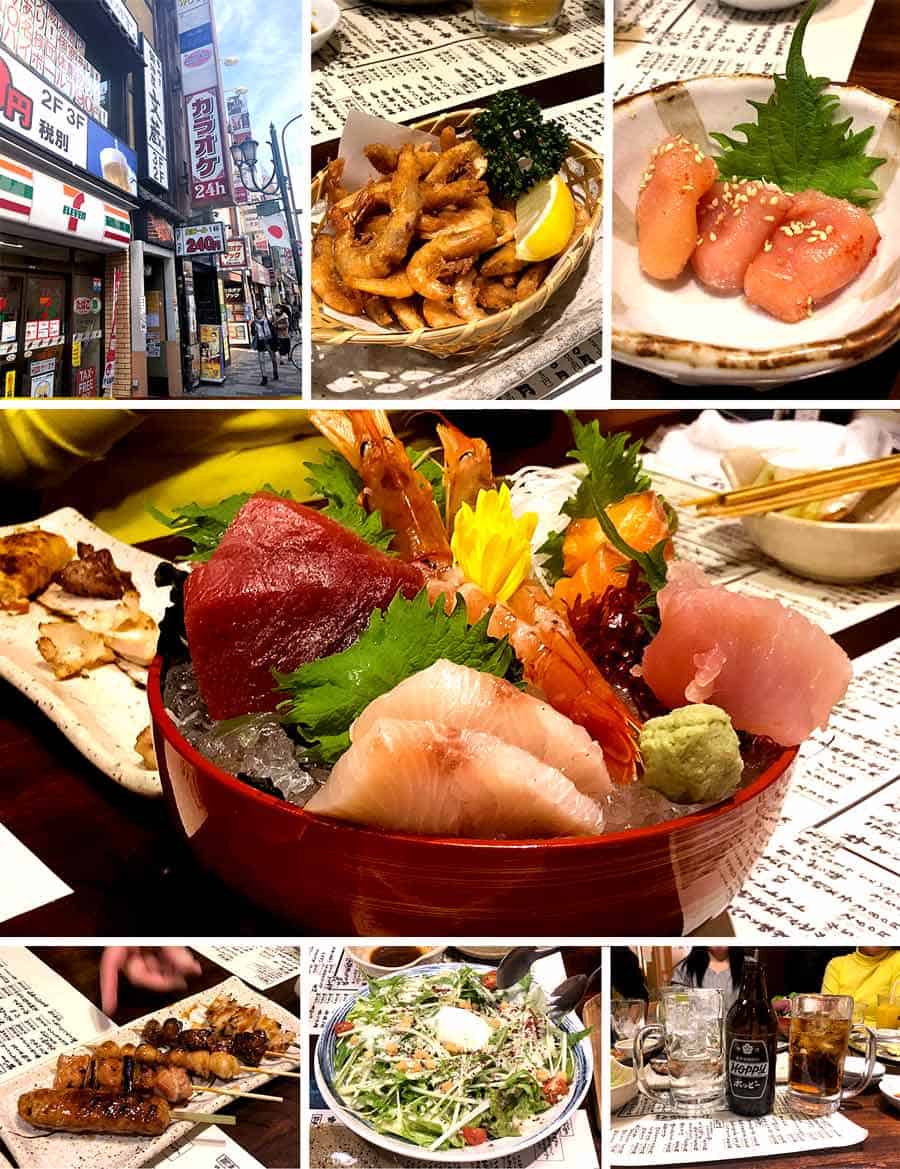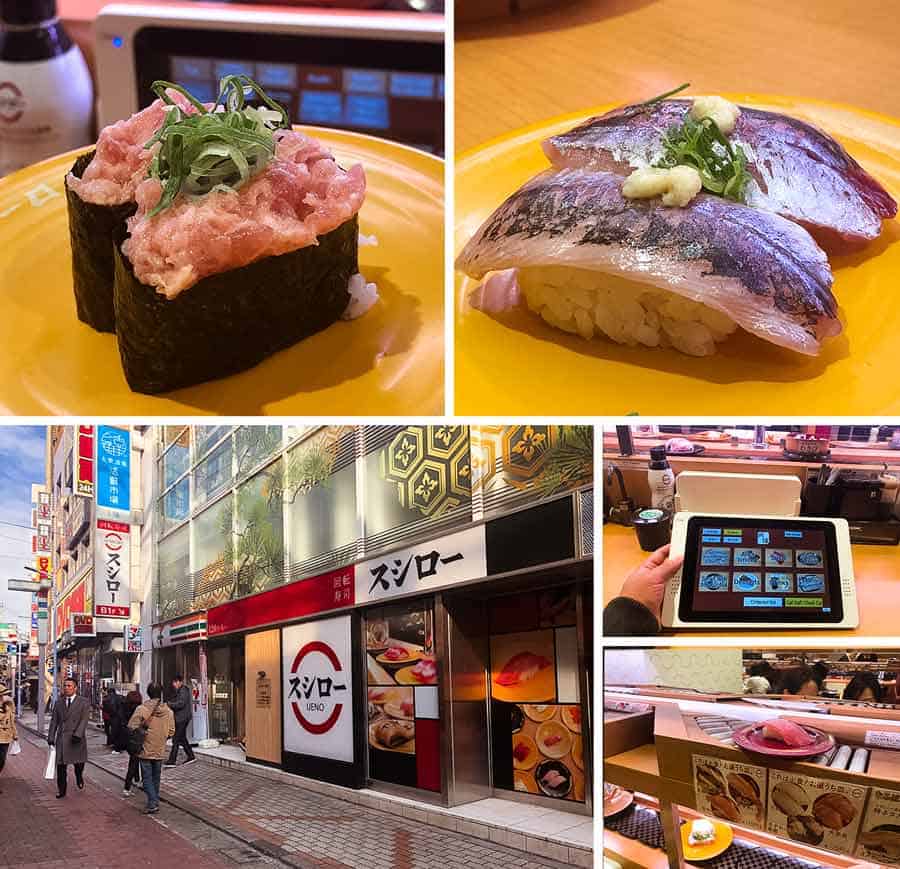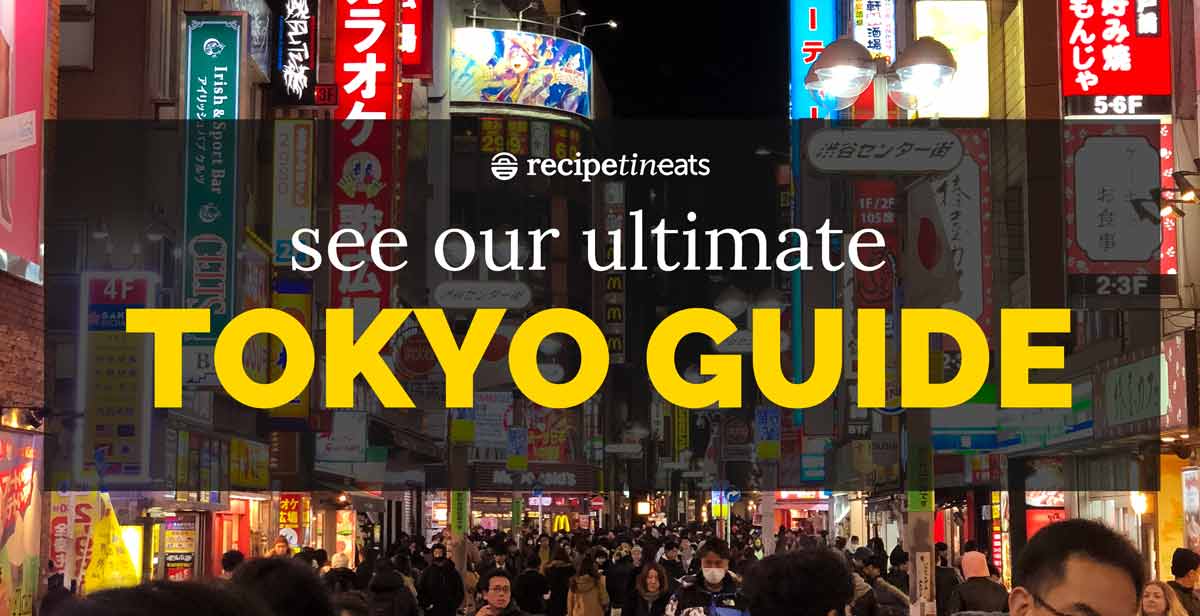Ueno is a major rail station hub that you’ll likely be passing through at some point during your visit to Tokyo! It’s a bustling suburb with a large park famous for Cherry Blossom viewing, a brilliantly rustic street market, as well as a mountain of excellent eating and drinking options. If you’re wondering if Ueno is worth visiting in its own right, the answer is YES! While Ueno is an excellent stopover choice if you’re on your way elsewhere, we also find ourselves in Ueno just because we’re fond of the area – and especially the food, of course! Psst Excellent ramen options here!
Ueno
Ueno is a suburb in northern Tokyo and is often called Tokyo’s cultural centre due to the presence of many museums and art galleries in the area, as well as being home to traditional performing arts exhibitions. Ueno Park is a large park that houses most of these museums as well as Ueno Zoo, and is also one of the prime locations for cherry-blossom viewing in the spring. Historically a working class area, some remnants of a downmarket character still linger in Ueno. There is a distinct lack of skyscrapers for one, and Ueno still has a red light district around Nakacho to the south west of the station. There is also Ameyoko, which traces its history as a former black market area post-World War 2. Today Ameyoko is a bustling street market with great atmosphere and is one of our favourite places to swing by every time we come to Japan.
What to do in Ueno
Ueno Park (Ueno Koen)
Ueno’s most famous attraction is Ueno Park (Ueno Koen), noted for housing many museums, art galleries, temples and shrines. It is also one of the most popular destinations during cherry blossom festival time (hanamatsuri), when thousands descend on the park to stroll and picnic under the cherry blossom trees.
At the southwest end of the park is a large lake, Shinobazu Pond, in the middle of which stands Bentendo, a hexagonally shaped temple dedicated to the goddess Benten. During cherry blossom season, you’ll find the area buzzing with people and street food stalls.
Other famous buildings to visit include Kaneji Temple, Kiyomizu Kannon-do, and Toshogu Shrine. Ueno Zoo is the oldest zoo in Japan. 400 animal species are housed in Ueno Zoo, including tigers, gorillas as well as the ever-popular pandas. For the kids, there is a petting zoo on the west side which you can reach by a short monorail that connects the east and west sides of the zoo, for added fun!
Museums
Within the Ueno Park grounds there are no less than three museums and two art galleries – enough to exhaust even the most hardcore culture junkie. Below are two of the most popular. The Tokyo National Museum is the world’s largest collection of Japanese art and archaeological artefacts, dating all the way back to Japanese pre-history to about the late 19th century. One of the four galleries also is devoted to artefacts from around Asia, predominantly Asian art along the Silk Road. English information and audio guidebooks are available. The National Museum of Western Art has a decent collection of art from the Renaissance through to the 20th Century. Works by many of the big names of Western art are featured here including Rubens, Monet, Van Gogh, Picasso and Jackson Pollock. The building itself is also of architectural note, designed by Swiss architect Le Corbusier.
Ameyoko
Running alongside the elevated railway line between Ueno and Okachimachi railway stations is Ameyoko, a long street market with many side and back alleys. Ameyoko is so named for the candy shops that historically existed here: Ameyoko is a portmanteau of ameya (candy shop) and yokocho (alley). You’ll still find candy sold in places here, alongside vast amounts of discount clothing, cheap jewellery, bags, and cosmetics. Along the main street you’ll also see fresh and dried seafood, fruit, and snacks being hawked by hollering shopkeepers. Bargaining is possible on some of the fresh and dried produce, but don’t expect massive discounts. A particularly unusual (for Japan) area of Ameyoko is the basement of Ameyoko Center Building where you will find an Asian wetmarket. Here shopkeepers from other Asian countries sell all manner of specialised groceries, vegetables, meat cuts and seafood for Chinese, South-East Asian and South Asian cuisines.
Best food in Ueno
While not as vast and intense as Shibuya or Shinjuku, Ueno still has plenty of eating and entertainment options. From elegant, formal dining to eat-on-the-run noodles and fast food, Ueno has every base covered. The heaviest concentration of restaurants are found directly to the south of Ueno Station (between Ueno and Okachimachi stations), and the area that is also west of this. RAMEN When it comes to tonkotsu ramen (pork bone broth ramen), Ichiran is one of the most widely loved ramen restaurants in Japan. Originally from Fukuoka, Ichiran have expanded nationwide to 60+ stores over the years. In Tokyo there are over a dozen branches, which is good news because you are never far away from what we also think is one of – if not the – best ramens around. The broth is deeply flavoursome and rich yet at the same time also amazingly delicate. The thin noodles have the perfect amount of bite (you can specify the firmness). This is the ramen of your piggy noodle soup dreams. Ichiran have a unique seating arrangement where diners at the counter sit separated from each other with a divider. It gives one the sensation of being in a confessional, a voting booth or an exam. Whatever the feeling, the point is clear: Total privacy to focus on enjoying this amazingly delicious noodle soup. If you have room for only one ramen in Tokyo, make it this one. Ichiran Address: 7 Chome-1-1 Ueno, Taito-ku, Tokyo (Map). Also at Asakusa, Shibuya, Shinjuku, etc. Phone: +81 3 5826 5861 Open: 24 x 7 Website|Tabelog page
CHICKEN WINGS We got the scoop on Sekai no Yamachan from Australian Masterchef winner and all-round Japanophile Adam Liaw’s Instagram feed. He didn’t let us down in pointing us to these very more-ish fried chicken wings from Nagoya. The wings are mid-section and tip only, and come painted with a little sweet sauce and a healthy sprinkling of fragrant pepper that totally makes it a thing. Wings are very reasonably priced, as are drinks – A dangerous combination that makes it easy to get sucked into drunken ordering spiral of wings, drink, wings, drink … (we speak from experience). English menus available. Sekai no Yamachan Address: 1F-4F TC Daisan Ueno Bldg., 4 Chome-3-7 Ueno Taito-ku, Tokyo (Map). Also at Akihabara, Shibuya, Shinjuku, etc. Phone: +81 3 5812 0222 Open: Sun-Thu 16:00-23:30 (LO 22:15), Fri/Sat 16:00-0:15 (LO 23:30) Website|Tabelog page
SPICY RAMEN We don’t normally seek out spicy ramen, so Mouko Tanmen Nakamoto was a refreshing change up. Their signature ramen is a fiery miso and chilli tanmen (ramen topped with stir fried vegetables and tofu too, in this case). A helpful illustrated spiciness scale posted outside the front door gives you an idea which ramen you should order. We had the most popular ramen sitting around the 5 mark on the scale, which packed enough heat for us. The hottest ramen on the scale goes all the way up to 10 and judging by colour alone it looks like it means business. Fun fact: Nakamoto also sell instant cup noodle versions of their famous ramen at 7-Eleven. How cool is that? Mouko Tanmen Nakamoto Address: 5 Chome-10-14 Ueno, Taito-ku, Tokyo (Map). Also at Ikebukuro, Shibuya, Shinjuku, etc. Phone: +81 3 5688 1233 Open: 11:00-24:00 daily Website (Japanese only)|Tabelog page
TONKATSU Housed in a cramped second-storey room with tired decor and no windows, the dining area of Tonkatsu Musashino looks more like a Kumon classroom than a restaurant. Clearly you’re just here for the food. Good thing then that Tonkatsu Musashino have been in the business of frying up breaded pork cutlets since 1948, so they have had a little time to fine tune their craft. And the results are rather awesome: This is some of the juiciest and most tender tonkatsu we’ve come across in a while (and we’ve had lots). Make sure you drizzle on some of the house-made tonkatsu sauce from the large pot on your table. Lunch sets are very affordable, with the smaller tonkatsu sets coming in at just 1000 yen or so. Tonkatsu Musashino Address: 2F, 2 Chome-8-1 Ueno, Taito-ku, Tokyo (Map). Phone: +81 3 3831 1672 Open: lunch 11:30-15:00 (LO), dinner 17:00-21:00 (LO) daily Website|Tabelog page
STREET FOOD There’s only one thing better than a good, old-fashioned street market and that’s a street market with street food! Our memory may be deceiving us, but it seems like Ameyoko has significantly upped its street food game over the years, with far more cheap-eat offerings around than we ever remember. There are Japanese snack favourites like takoyaki (fried batter balls with octopus), freshly cut fruit, oden (stewed fish cakes) on skewers, shucked-to-order oysters, fried goodies, soft-serve icecream, yakitori (grilled chicken skewers) – the list goes on. The fare also extends beyond Japanese food, with a number of Chinese street stalls offering everything from dumplings to stir fries and regional Chinese specialities (some are open pretty early, for breakfast). There’s even a kebab shop or two! SUSHI
IZAKAYA Kajiya Bunzou (Ueno) A chain with a number of branches around the city, this dependable little izakaya is one of local family’s favourites. Kajiya Bunzou have an extensive menu of typical izakaya favourites – salads, yakitori, grilled and fried dishes, sashimi, and various small snack plates. An English version of the menu with pictures that isn’t cut down is also available (woo!) You can’t go too wrong ordering. The dozen or more dishes we’ve tried have all been highly tasty. One of the house specials is tori-bunzo-yaki, a roasted chicken leg heavily slathered with fiery Indian-style spices. A curious outlier on an otherwise traditional izakaya menu, this dish is actually insanely good, especially with cold beer. Order it now, thank us later. Kajiya Bunzou Address: 2F-3F Hayashi Bldg., 4 Chome-8-7 Taito, Taito-ku, Tokyo (Map). Also at Kasumigaseki, Marunouchi, Shinbashi, etc. Phone: +81 50 5819 7455 (reservations) Phone: +81 3 3836 1012 (enquiry) Open: Mon-Fri 17:00-23:00 (LO 22:30), Sat 16:00-23:00 (LO 22:30), Sun/PH 16:00-22:30 (LO 22:00) Tabelog page
Sushiro B1F Ueno Oriental Bldg., 6 Chome-9-9 Ueno, Taito-ku, Tokyo (Map). Phone: +81 3 5846 6077 Open: Mon-Fri 11:30-23:00 (LO 22:30), Sat/Sun/PH 10:30-23:00 (LO 22:30) Website (Japanese only)|Tabelog page
How to get to Ueno
You can get to Ueno by taking any of the following and get off at Ueno station.
JR Yamanote Line JR Keihin-Tohoku Line Tokyo Metro Hibiya Line
Read the Tokyo Trains section in the Tokyo Travel Guide for information on travelling on trains, and how to figure out which trains to catch where!
Ueno Area Map
How to use this map
By restaurant name – Click the icon on the top left to reveal our list of recommended restaurants in this area (see above for more information on each restaurant). Then click on the restaurant for more information about that restaurant as well as highlighting the marker on the map. Zoom in and out by clicking the + and – on the bottom left. Large view – Click the icon on the top right to open a new tab to view the map in full screen. Click a marker on the map to reveal more information about the restaurant.
See our Tokyo Guide!
Born in Japan, raised in Australia, Sydney is our hometown, but Tokyo is our playground. This Tokyo Travel Guide is a culmination of a lifetime of travelling to Tokyo, condensed into one place!!
Asakusa / Shinjuku / Shibuya / Harajuku / Tokyo Station / Imperial Palace / Ginza / Ueno / Akihabara
